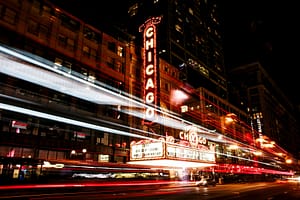Chicago was founded in the 1830’s and has been the economic and cultural heart of Illinois ever since. The city is famous for its laid-back Midwest attitude, and in many ways it represents the general population of the state. The home of many US Presidents and warm-hearted people, Illinois is a fun and rewarding travel destination.
The rivers and lakes of Illinois have been home to Native American tribes for thousands of years before the arrival of Europeans. The Central Illinois River Valley has numerous ancient sites, settlements, and burial mounds such as the Koster Site and Monks Mound. Today, visitors can learn about Illinois’ Native American heritage at places like Starved Rock State Park (Route 178 and Route 71, Utica).
The French were first Europeans to the region when the Illinois River was explored by Louis Jolliet and Jacques Marquette in 1673. They built a fort on top of Starved Rock State Park, creating a toehold for the French empire right through to 1763, when the territory was given to the British after they conquered New France. The British never settled Illinois, however, and the French pioneers founded most of the early outposts.
When the Lewis and Clark Expedition passed through Illinois in 1778, George Rogers Clark claimed the Illinois River Valley for the colony of Virginia. After independence, the region became part of the new Northwest Territory in 1783. In 1818, Illinois became America’s 21st state.
State representative Abraham Lincoln lobbied to move the capital to his hometown of Springfield in 1837, where it remains today. The capitol building was constructed in 1867 after Lincoln had been elected president. By 1857, Chicago was Illinois’ main city and an important Great Lakes port and railroad hub. The Great Chicago Fire burned the entire downtown to ash in 1871.
During the Civil War, Illinois contributed 250,000 soldiers to the Union army. The great General Ulysses S. Grant was an Illinois native. At the turn of the century, immigrants from eastern and southern Europe flooded into the state, followed by the Great African American Migration of freed black slaves. This contributed to the ethnic and racial diversity Chicago enjoys today, while major events like the 1933 World’s Fair and the Great Chicago Fire put Chicago on the global map.
Illinois is Chicago, and Chicago is Illinois. This vibrant city has been a bellwether for American culture, society, and politics since its rise to prominence in the mid-1800’s. It’s known as a great place to live, work, and play. From Chicago blues to world-class theater and some of the best shopping in the country, this city really has it all.
The rest of Illinois coasts by at a relaxed pace. Most of the historic towns are located within the huge Mississippi River Valley or along other major waterways like the Illinois River. Illinois was an anti-slavery state before most others thanks to the presence of Abe Lincoln. The Underground Railroad had deep roots here, helping to shape the state’s society into a tolerant multicultural center. Visitors can expect a positive, friendly feeling most places they go, and little pretension, even in the big city.

